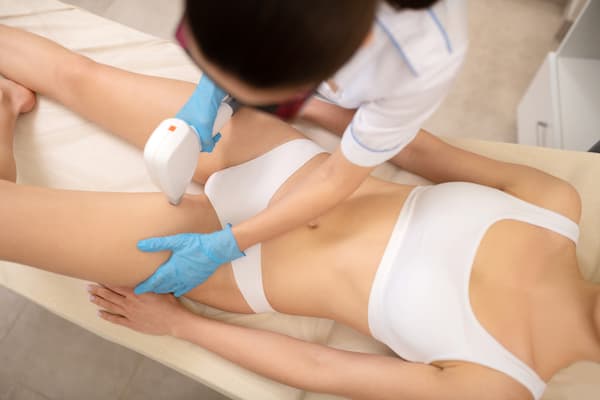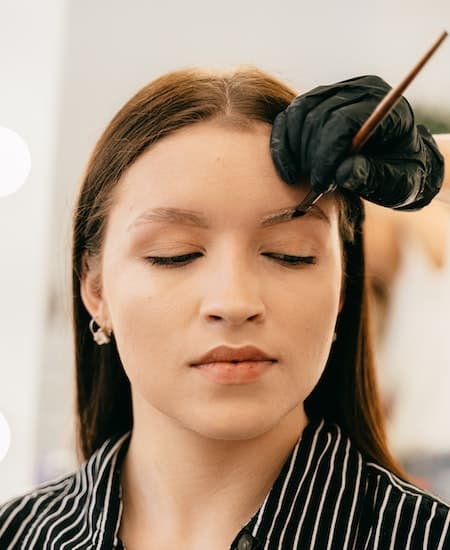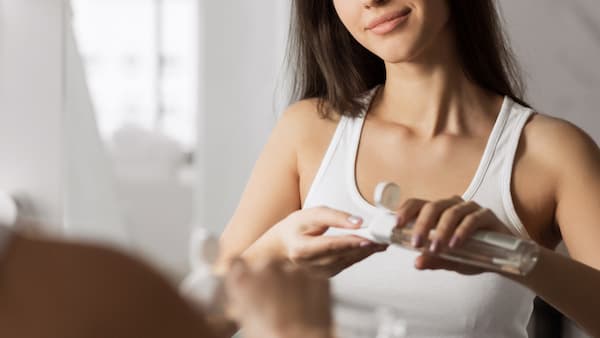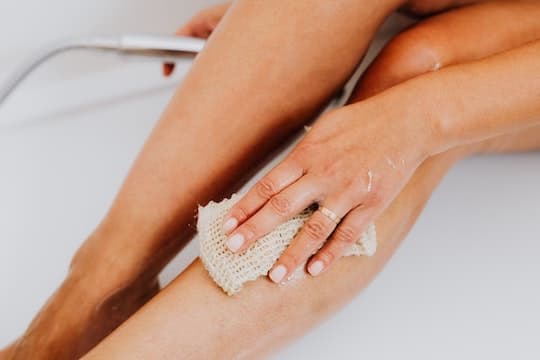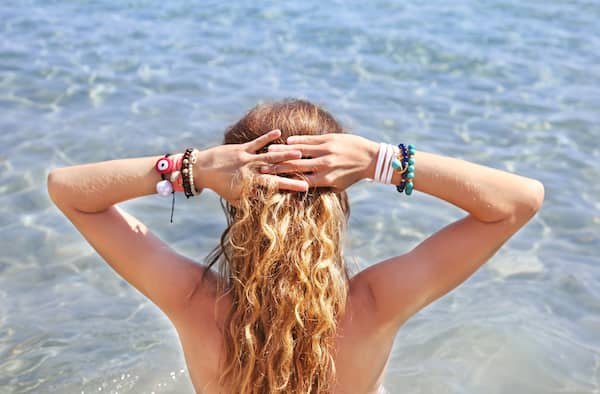How to Use Dry Shampoo {5 Simple Steps}
Are you wondering how to use dry shampoo?
Today we’re sharing everything you need to know in order to get the best results for your hair!
Dry shampoo is a total game-changer when it comes to hair care.
You’ve probably already heard that you don’t need to be washing your hair every single day. While it depends on your hair type, many beauty experts recommend washing your hair anywhere from every other day to twice a week.
However, many people don’t like the way their hair looks/feels when unwashed.
Enter dry shampoo.
Dry shampoo is a must-have product that lets you refresh your hair in between washes.
It’s a lifesaver for those in-between days that will keep your hair looking fresh and clean even when you don’t feel like washing it.
It soaks up excess oil in your hair to keep it from looking greasy, and it adds volume to stop it from looking flat or limp.
Here are some must-know tips for how to use dry shampoo to get the best results:
How To Use Dry Shampoo
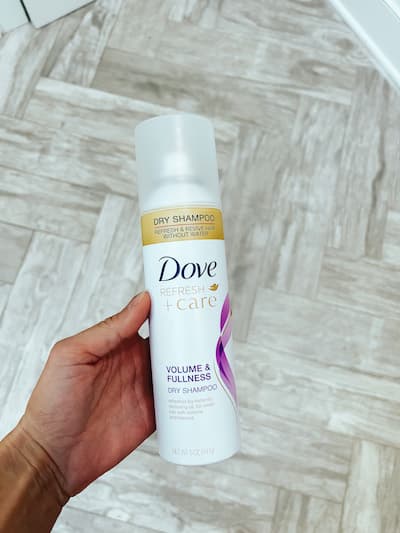
1. Choose the right type of dry shampoo for your hair.
There are different types of dry shampoo and it’s important to choose the kind that is best for you and your hair.
If you have fine hair or medium hair, you will want to stick with an aerosol or spray dry shampoo that is light and will not weigh down your hair.
For thicker hair, you can use an aerosol or spray option, or one that is a powder.
Additionally, if you have dark hair, you’ll want to make sure you grab one that doesn’t leave a white residue.
In addition to different types of formulas, there are also several varieties of dry shampoo. For example, the one being used above is specifically for volume and fullness. There are also varieties that are specific to post-workout, etc.
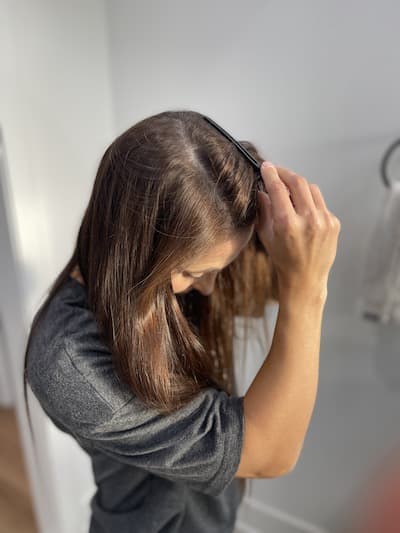
2. Prep your hair before applying dry shampoo.
Before applying dry shampoo, you will want to comb it out and part it into smaller sections.
If you are using an aerosol or spray dry shampoo, you will also want to shake up the bottle to ensure that the product comes out evenly.
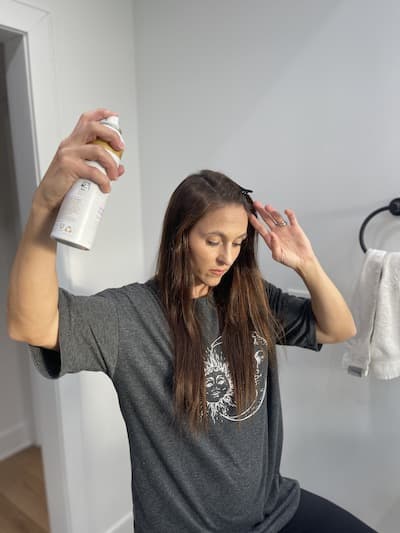
3. Apply dry shampoo evenly and don’t go overboard.
Once you’ve prepped your hair, you can apply dry shampoo in sections, sticking closer to your scalp and any sections that look particularly oily.
If you’re using an aerosol or spray dry shampoo, be sure to hold the bottle at arm’s length to make sure that your coverage isn’t too heavy.
It’s important not to go overboard and apply too much product, or else it can leave behind a textured residue.
If you’re using dry shampoo in powder form, applying too much can also leave white flecks in your hair which you definitely do not want!
For finer hair, you do not need to use as much dry shampoo, while thicker hair may require more product in order to soak up all the oils.
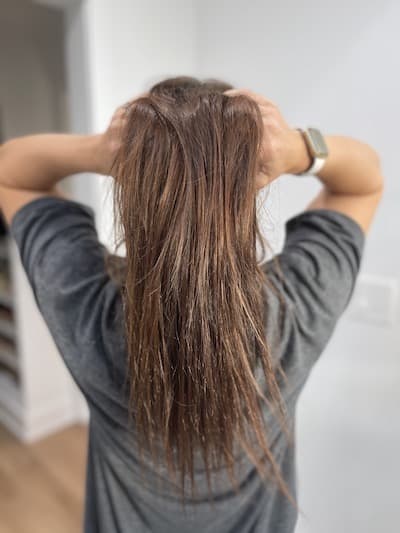
4. Massage the dry shampoo into your scalp.
Once you’ve applied dry shampoo evenly on your hair, you can let it sit for a minute and then massage it into your scalp.
Massaging it into your scalp can help distribute it better and dispense of any residue.
The great thing about dry shampoo is you will see the results right away.
If you happen to accidentally apply too much product, you can brush out the excess with a comb or hairbrush.
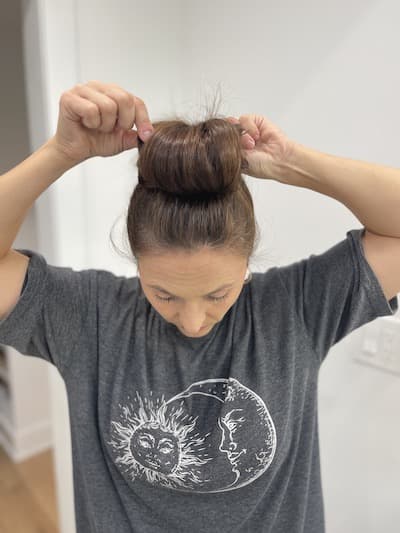
5. Use it for added volume when styling
One great thing about dry shampoo is that it’s not just for removing grease and oil. It also works as a volumizer which helps with certain hairstyles.
For example, if you haven’t washed your hair in a day or so and you want to style your hair in a big bun, spray your hair with dry shampoo from root to tip. Then, when you pull your hair up into a bun you can easily tug at the hair, pulling the pieces out further to make the bun larger.
Dry Shampoo FAQ’s
How long can you leave dry shampoo in your hair?
Dry shampoo is not meant to replace regular shampoo. It’s just a quick and simple way to refresh your hair in between washes.
You shouldn’t leave dry shampoo in your hair for more than two days before rinsing it out. Washing it out can be done with your regular shampoo.
You also shouldn’t apply it multiple times in a row.
While dry shampoo is great for soaking up oil in your hair and adding volume, it can actually have a negative effect if you use it too often. This is because the excess product can build up and clog your hair follicles.
It’s best to only use dry shampoo for a day or two in between washes.
When should I use dry shampoo?
Dry shampoo is perfect for refreshing hair that has not been washed in a day (or two, or three!) It’s also great for preserving and extending the life of a blowout.
If you want to retain that shiny, bouncy look you got from a blowout for a little while longer, a spritz of dry shampoo can work wonders.
Is it better to put dry shampoo on wet or dry hair?
As the name implies, dry shampoo is for dry hair. For best results, you should only use it on dry hair that is in between washes.
Wait a day or two after washing your hair before you apply any dry shampoo.
Do you brush out dry shampoo?
After you apply dry shampoo to your hair, you should let it sit for a minute and then lightly massage it into your scalp. You do not need to brush it out, unless you apply too much and want to remove the residue from your hair.
In order to remove dry shampoo, you just need to rinse it out the next time you wash your hair.
Can you use dry shampoo to add volume?
Dry shampoo is actually one of the simplest and quickest ways to add volume without having to wash and re-style your hair.
In order to get volume, apply dry shampoo as you normally would, then finish off by blowdrying with a diffuser. This will add instant volume while also leaving your hair looking and feeling clean.
For an extra boost of volume blow dry with a large round bristle brush.
Does dry shampoo make hair look thicker?
While dry shampoo doesn’t actually add thickness to hair it certainly gives a more full appearance.
What’s the difference between dry shampoo vs. volumizing powder?
Dry shampoo is a product that helps to absorb oils and grease from your hair and scalp in-between washes.
Volumizing powder is a combination of a volumizer and a texture spray. It is slightly tacky to help create texture, but it can also help to absorb oils.
Both are great products and ultimately your hair type will determine which of the 2 products is best for you.
Does dry shampoo work on thin hair?
Dry shampoo works wonders on thin hair.
Many women with thin hair find that they have to wash their hair every day to avoid oiliness (even though washing every day isn’t recommended). It’s the best solution for keeping hair clean while also giving it volume.
How To Make your own DIY dry shampoo.
Don’t have any dry shampoo at home, or just want to make your own using more natural ingredients?
There are actually several ways to make your own DIY dry shampoo!
You can actually use baking soda as dry shampoo to soak up excess oils and add volume to your hair. To get a darker color, you can mix it with cocoa powder or activated charcoal.
Another alternative instead of baking soda is arrowroot powder.
Just be careful not to use too much powder on your hair, and follow the same steps as above to massage and blend it.
Benefits of Dry Shampoo
Dry shampoo is an easy-to-use solution that revitalizes your hair and keeps it looking fresh, clean, and voluminous even when you haven’t washed it for a few days.
Not only that, it can extend the life of a blowout by an extra day or two.
And if your hair is on the finer side, using dry shampoo can add a little texture to your hair to make certain hairstyles stay in place better, like braids or a messy bun.
You can also use a bit of dry shampoo on fine hair if you want to create a better grip for bobby pins or other hair accessories.
While dry shampoo is not intended to be a substitute for regular shampoo, and you should only use it once in between washes, it’s an easy, low-maintenance way to keep your hair looking healthy and fresh.
